#Automated Composition
Explore tagged Tumblr posts
Text
Artificial Intelligence Revolutionizes the Music World: The Case of "Neural Notes Revolution"
Artificial intelligence (AI) is rapidly transforming our world, permeating sectors from healthcare to industry, education to transportation. This technology, which aims to replicate and surpass human cognitive abilities, promises to revolutionize the way we live and work.
The applications of AI are numerous and ever-expanding: from medical diagnosis to autonomous driving, data analysis to content creation. A particularly intriguing field is music, where AI is demonstrating remarkable potential.
Recently, there has been much discussion about AI-based music generation platforms like "Suno" and "Udio," accused of violating numerous artists' copyrights to train their algorithms. These controversies highlight the complex ethical and legal issues that AI raises in the artistic field.
In this context, the Italian project "Neural Notes Revolution" emerges, demonstrating how, with the aid of AI programs, the study of algorithms suitable for targeted generation of musical styles, voices, song structures, and with adequate post-processing, it's possible to produce musical pieces of any genre and style, in any language, in relatively short timeframes.
The project also leverages other generative AI platforms such as OpenAI's ChatGPT (Microsoft group, of which Elon Musk was a co-founder), Anthropic's Claude AI, and Google's Gemini. These technologies allow for the generation of texts, both original and based on precise or imaginative prompts, in numerous languages, even using expressions typical of specific localities and dialects.
However, "Neural Notes Revolution" still faces some challenges. The results provided by ChatBOTs require careful verification, and in the music field, generation platforms have significant limitations. In particular, "Suno" and "Udio" lack a precise and rigorous syntax that allows for accurate results. Often, the outcomes are even opposite to those desired, forcing a trial-and-error approach. One of the major limitations is the near-total impossibility of having clear style changes within the same song.
Expected future developments include the ability to modify produced songs in a targeted manner. It would be useful to have separate files for the vocal part, the musical backing, and the lyrics in subtitle format. Moreover, there's hope to be able to modify individual parts of text or music, and above all, to have a correct and rigorously respected syntax for the song structure and use of styles.
The use of these platforms raises several issues. On one hand, they offer new creative possibilities and democratize music production. On the other, they raise concerns about copyright, artistic authenticity, and the future of work in the music industry.
In conclusion, while giving space to creativity, we are still far from competing with the styles, voices, and tones of artists of all time. However, in defense of the "new artists" of the AI era, it must be recognized that creativity and skill are still necessary to produce musical pieces of a certain depth. This is particularly relevant in a modern musical landscape that often offers music devoid of artistic and cultural significance. AI in music thus represents both a challenge and an opportunity, requiring a balance between technological innovation and preservation of human artistic expression.
#neuralnotesrevolution#ai#Artificial Intelligence#AI and Music#AI Music Generation#AI-Generated Music#Musical Algorithms#Digital Music#Musical Innovation#Music Technology#Automated Composition#Artificial Creativity#AI Music Production#Future Music#AI in Music#Music and Technology#AI Musical Instruments#AI-Assisted Composition#AI Music Software#Neural Networks and Music#AI in Music Industry#AI Music Innovations
3 notes
·
View notes
Text


#bernie sanders#work week reduction#32-hour work week#overtime pay#productivity#technology#fair labor standards act#international examples#france#norway#denmark#germany#well-being#stress#fatigue#republican senator bill cassidy#small enterprises#job losses#consumer prices#japan#economic output#labor dynamics#artificial intelligence#automation#workforce composition
125 notes
·
View notes
Text
Some of you are so fucking stupid
#im not getting into it#but jfc you morons think artists are entitled for telling ppl to learn how to draw. or ableist#disabled artists exist#we just have to adjust pur process#ffs automating art makes it pointless bc you get rid of the process#like#it's not photography you morons#photography takes skill precision taste and all that#with ai image generation youre not even making or FINDING a composition#and also it doesnt respect the people who influenced them#it has nothing to do with ownership and everything to do with respect#someone who commissioned a piece didnt make the piece#they provided ideas and maybe some direction#but that doesnt make them an artist#and ffs if someone wants to intruduce ai gen into their process bc they're trying ro limit strain to their body abd theyre transparent#about their process and are being completely respectful of the og artists wishes thats different#but that isnt the case most of the time#and DISABLED PEOPLE MAKE ART AS IT IS#because the process is part of ehat matters#and is why artists make art#it's not to see something you want to see#it's about creating yk?#and having fun#anyone can learn how to draw#and art doesnt have to be good to be worth something#idk i just think some of you are seeing it as a class thing when it's really just about making things you care about#and when youre not actually making it or synthesizing it or finding it#then whats the point?#i think the best use for ai gen is funny images tbh#bc oh shit im out of tags that can be a discussion for another day
3 notes
·
View notes
Text
How AI is Transforming the Aerostructures Market

Artificial Intelligence (AI) is revolutionizing numerous industries, and the Aerostructures Market is no exception. As AI technologies advance, they are increasingly integrated into the design, manufacturing, and maintenance of aerostructures, leading to enhanced efficiency, sustainability, and performance. This blog explores the multifaceted impact of AI on the Aerostructures Market, highlighting its role in driving innovation and addressing existing challenges.
Introduction to the Aerostructures Market
The Aerostructures Market encompasses the development and production of critical aircraft components, including fuselages, wings, empennages, and other structural elements. These components are essential for the structural integrity and aerodynamic performance of aircraft. As of 2023, the global Aerostructures Market was valued at USD 61.0 billion and is projected to reach USD 84.0 billion by 2028, reflecting a compound annual growth rate (CAGR) of 6.6% during the forecast period. This growth is driven by technological advancements, the expansion of Maintenance, Repair, and Overhaul (MRO) services, and the decreasing cost of composite materials.
AI-Driven Design Innovations in Aerostructures
AI is transforming the design phase of aerostructures by enabling more efficient and innovative approaches. Through machine learning algorithms and deep neural networks, engineers can analyze vast datasets to optimize designs for weight reduction, structural integrity, and aerodynamic efficiency. This data-driven approach facilitates the creation of complex geometries and the selection of optimal materials, leading to the development of lightweight aircraft designs that enhance fuel efficiency and reduce emissions.
Furthermore, AI-powered generative design tools allow for rapid prototyping and iterative testing, significantly reducing the time required to bring new designs to fruition. By automating the design process, AI enables engineers to explore a broader design space, uncovering innovative solutions that may not be immediately apparent through traditional methods.
Download Pdf Brochure: https://www.marketsandmarkets.com/pdfdownloadNew.asp?id=22021525
Enhancing Manufacturing Processes with AI
In the manufacturing realm, AI contributes to increased efficiency and quality control. Advanced robotics and automation, guided by AI algorithms, perform precise assembly tasks, reducing human error and increasing production rates. Predictive maintenance powered by AI monitors equipment health in real-time, anticipating failures before they occur and minimizing downtime. Additionally, AI-driven quality inspection systems utilize computer vision to detect defects in aerostructures, ensuring that only components meeting stringent standards are delivered.
The integration of AI in manufacturing also supports the adoption of composite materials in aviation. AI models predict how these materials behave under various conditions, informing manufacturing processes to achieve desired properties such as strength and flexibility. This capability is particularly valuable given the industry's focus on developing lightweight aircraft designs to improve performance and sustainability.
AI in Maintenance, Repair, and Overhaul (MRO) Services
The expansion of MRO services is a significant driver of the Aerostructures Market. AI enhances MRO operations by enabling predictive maintenance, where machine learning models analyze data from aircraft sensors to forecast component failures before they happen. This proactive approach reduces unplanned downtime and extends the lifespan of aerostructures.
AI-driven diagnostics also streamline the identification of issues, allowing maintenance crews to address problems more efficiently. For instance, AI can analyze patterns in wear and tear, guiding targeted inspections and repairs. This efficiency not only reduces costs but also improves safety by ensuring that potential issues are addressed promptly.
Addressing Sustainability and Efficiency in Aerostructures
Efficiency and sustainability are central to the evolution of the Aerostructures Market. AI contributes to these goals by optimizing designs to reduce weight and improve aerodynamics, leading to lower fuel consumption and emissions. Additionally, AI aids in the development of eco-friendly materials and manufacturing processes. For example, AI can assist in creating composites made from recycled materials or bio-based resins, aligning with the industry's push towards sustainability.
Moreover, AI enhances supply chain management by predicting demand and optimizing inventory levels, reducing waste and ensuring that resources are used efficiently. This capability is particularly important given the complex and global nature of aerospace supply chains.
Challenges in Recycling Composite Materials
Despite the advantages of composite materials, recycling them poses significant challenges. AI offers potential solutions by improving sorting and processing techniques. Machine learning algorithms can identify different composite materials and determine the most effective recycling methods, enhancing the feasibility of reusing these materials. Additionally, AI-driven design can focus on creating aerostructures that are easier to disassemble and recycle at the end of their lifecycle, contributing to a more sustainable industry.
Opportunities in the Unmanned Aerial Vehicles (UAVs) Segment
The growing demand for UAVs presents substantial opportunities for the Aerostructures Market. AI plays a crucial role in this segment by enabling autonomous flight systems and enhancing the performance of UAVs. AI-driven design optimization leads to UAV aerostructures that are lightweight and efficient, extending flight times and payload capacities. Furthermore, AI facilitates advanced control systems that allow UAVs to operate safely and effectively in complex environments.
Supply Chain Optimization through AI
Supply chain constraints and high shipping costs are challenges in the Aerostructures Market. AI addresses these issues by optimizing logistics and inventory management. Predictive analytics forecast demand fluctuations, enabling manufacturers to adjust production schedules and inventory levels accordingly. AI also identifies the most efficient shipping routes and methods, reducing transportation costs and improving delivery times. By enhancing supply chain visibility and responsiveness, AI contributes to a more resilient and cost-effective Aerostructures Market.
Ask For Sample Report: https://www.marketsandmarkets.com/requestsampleNew.asp?id=22021525
Regional Insights: North America's Growth Trajectory
North America is expected to experience significant growth in the Aerostructures Market during the forecast period. This expansion is driven by increasing demand for commercial aircraft and the presence of leading aerostructure manufacturers investing in AI technologies. The region's focus on research and development, coupled with the adoption of AI in aerospace engineering innovations, positions it at the forefront of market growth.
Future Outlook of AI in the Aerostructures Market
The continued evolution of AI technologies is set to redefine the Aerostructures Market in the coming years. AI’s role in lightweight aircraft designs, composite materials in aviation, and aerostructure manufacturing automation will continue to expand, unlocking new levels of efficiency, sustainability, and cost savings. With advancements in AI-driven predictive maintenance, quality control, and supply chain optimization, aerostructure manufacturers will be better equipped to handle increasing production demands and regulatory requirements.
Additionally, as the demand for Unmanned Aerial Vehicles (UAVs) grows, AI will play a pivotal role in shaping the future of UAV aerostructures by improving design, durability, and performance. AI-powered simulations will further enhance aerostructure testing, reducing the reliance on costly physical prototypes and speeding up the aircraft development process.
Despite challenges such as recycling composite materials and supply chain disruptions, AI-driven solutions will continue to emerge, mitigating these issues and supporting a more sustainable aerospace industry. As the Aerostructures Market grows, AI will remain a key driver of innovation, ensuring that aircraft of the future are more efficient, eco-friendly, and technologically advanced than ever before.
#aerostructures market#ai in aerostructures#aircraft structural components#aerostructure manufacturing automation#composite materials in aviation#uav aerostructures
0 notes
Text
Beats, Bytes & The Future Sound: AI Meets Electronic Music
Electronic music has always been about pushing boundaries, breaking rules, and bending sound into new dimensions. Now, artificial intelligence is stepping into the booth, reshaping how beats are built, melodies emerge, and tracks come to life. This isn’t about robots replacing producers—it’s about a new creative partnership, where human intuition meets machine-driven possibilities.The Evolution…
#AI and sound design#AI beat generation#AI for producers#AI in electronic music#AI in music production#AI mixing and mastering#AI music algorithms#AI music collaboration#AI music creation#AI music technology#AI music trends.#AI rhythm generation#AI-driven sound synthesis#AI-generated beats#AI-powered music software#artificial intelligence in techno#artificial intelligence music production#automated music production#creative AI music#digital music production#electronic music and AI#electronic music tools#future of music production#machine learning music#music composition AI#music innovation AI#music production AI tools#music production tools#neural networks in music#sound design AI
0 notes
Text
Discovering the Power of Reaper: My Go-To DAW for Music Production
In the expansive world of digital audio workstations (DAWs), Reaper stands out not just for its robust features and affordability but as my DAW of choice for all my music production needs. From the intricate beats crafted for the Garlic Farm project to the diverse soundscapes explored in my other works, Reaper has been an indispensable tool in my creative arsenal. Here’s why Reaper has earned its…
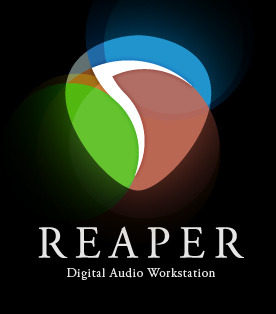
View On WordPress
#Advanced Music Production#Audio Editing#Audio Mixing#Audio Production Tips#Audio Routing#Beat Making#Beatstars#Customizable DAW#Digital Audio Workstation#Efficient Music Software#Free Beats Download#Garlic Farm Project#Home Studio Setup#MIDI Sequencing#Multi-Platform DAW#Music Automation#Music Composition#Music Creation Tools#Music Production#Music Production Guide#Music Software Review#Professional Audio#Reaper DAW#Reaper for Beginners#Recording Software#Sound Design#VST Plugins
1 note
·
View note
Photo

Landscape - Decking An example of a mid-sized modern partial sun backyard landscaping with a pergola and decking.
0 notes
Text
Does Automation Really Reduce Payroll?
Automation and robotics are touted as a panacea to the problem of qualified worker shortages. Can the resource outlays more than pay for themselves once the automated lines are up and running?
Automation can significantly reduce payroll needs in various industries, including metal fabricating. The impact of automation on payroll is primarily due to its ability to increase efficiency, productivity, and accuracy while reducing the need for manual labor in certain tasks. Here are some key points on how automation affects payroll:
Reduction in Manual Labor: Automation typically reduces the need for manual labor, especially for repetitive, mundane, or physically demanding tasks (the three D’s: dull, dirty, and dangerous). Machines and automated systems can perform these tasks more efficiently and for longer hours than human workers, leading to a reduced need for a large workforce.
Shift in Workforce Composition: While automation may reduce the number of low-skilled positions, there is often an increased demand for higher-skilled workers who can manage, maintain, and optimize automated systems. This shift can change the nature of payroll expenses, with a possible increase in salaries for these higher-skilled positions, but overall fewer employees.
Increased Productivity and Efficiency: Automated systems often work faster and more consistently than humans, increasing overall productivity. This means that the same amount of work (or more) can be done with fewer employees, leading to a potential decrease in payroll costs.
Reduction in Errors and Rework: Automation can also reduce costs associated with human errors, rework, and quality control. Automated systems can maintain high precision and consistency, leading to improved product quality and lower waste, which indirectly affects payroll needs by reducing the need for additional labor to correct mistakes.
Long-term Savings vs. Short-term Investment: While the initial investment in automation can be significant, the long-term savings on labor costs can be substantial. Over time, the reduction in payroll due to automation can offset the initial costs of purchasing and implementing automated systems.
Training and Development Needs: With automation, there's a need for ongoing training and development of staff to work effectively with new technologies. This aspect of payroll might increase as employees are upskilled to handle more advanced systems.
In summary, automation generally leads to a decrease in payroll needs related to manual labor, but it also requires a shift towards a more skilled workforce. The overall impact on payroll will depend on the extent of automation, the nature of the work, and the company's adaptation strategy in terms of workforce development and restructuring.
#Automation Really#Reduce Payroll#robotics#qualified worker#Reduction in Manual Labor#manual labor#repetitive#mundane#Shift in Workforce Composition#Increased Productivity and Efficiency#Reduction in Errors and Rework#Long-term Savings#Short-term Investment#Training and Development Needs#workforce development#automated systems
0 notes
Text
Windslar M-Train Station (NO CC)

Windslar M-Train Station is the northern terminus of the Windslar-Lykke-Britechester line in the Windenbahn high-speed rail network. Originally built in 1998 through a collaboration between Lesmana Enterprise and the Windenburg Royal Ministry of Transport, the station now stands as a state-of-the-art transportation hub. It houses a dedicated maglev rail for the A12 Seraphim, the fastest train in the Western SimWorld, offering seamless, high-speed connections across the region. With premium waiting lounges, a spacious café, a capsule hotel for overnight stays, digital information kiosks, automated ticketing, and high-speed Wi-Fi, Windslar M-Train Station ensures a smooth and comfortable travel experience for all passengers.




New Interior Facelift
The Windslar M-Train Station interior blends modern sophistication with passenger comfort, offering a seamless travel experience. The spacious concourse features sleek ticketing kiosks, automated turnstiles, and a real-time departure board in Simlish for easy navigation. Soft ambient lighting, elegant architectural details, and lush greenery create an inviting atmosphere, while premium seating areas provide relaxation before boarding. A cozy café (POLA Coffee) serves freshly brewed coffee and local delicacies, making it a perfect stop for commuters and travelers alike. With its futuristic design and high-tech amenities, Windslar Station embodies the pinnacle of efficient and luxurious transit in the Windenbahn network.
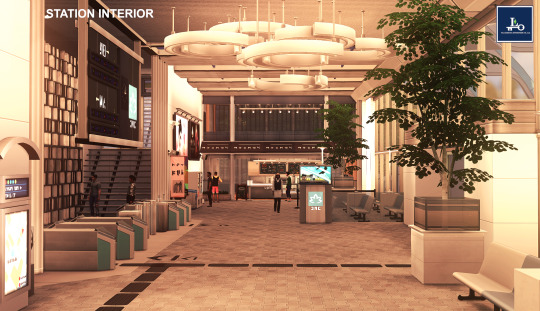



Windslar Greets You
The peron offers a breathtaking view of the lush countryside, ready to greet travelers with its serene landscapes.

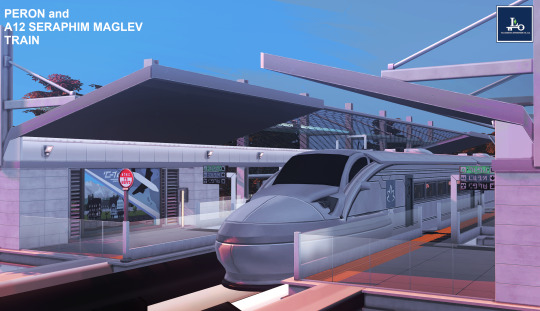
The A12 Seraphim is a masterpiece of speed and comfort, soaring across the landscape at an impressive 510 km/h. Inside, the cabin is designed for both luxury and efficiency.
Seraphim Business Class
Step into the A12 Seraphim Business Class, where elegance meets high-speed innovation. Plush black leather seats with personal entertainment screens ensure a serene and private travel experience. Soft ambient lighting enhances the cabin’s refined atmosphere, while panoramic windows frame breathtaking countryside views at unmatched speeds.
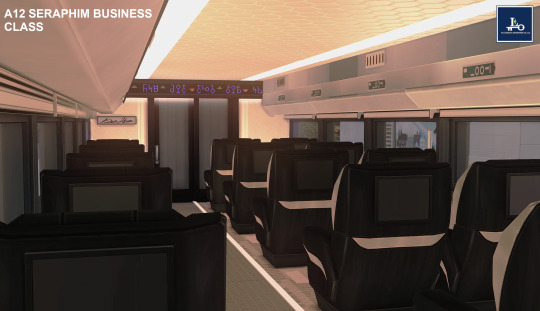
Seraphim Coach Class
For those who seek both comfort and affordability, the Seraphim Coach Class provides spacious seating with deep blue ergonomic chairs designed for long-haul relaxation. Overhead luggage compartments ensure a clutter-free space, while the warm glow of the ceiling lights adds to the welcoming ambiance.
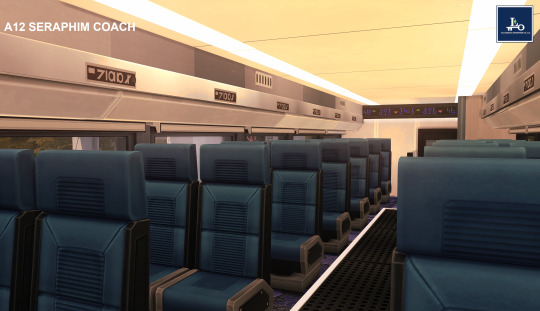
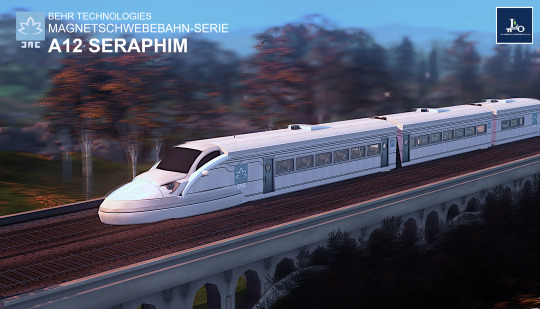
BONUS: A12 Seraphim on Rail, Photo op Lot
Capture the thrill of high-speed travel with the A12 Seraphim on Rail photo op lot! This scenic location is the perfect backdrop for Sim stories, machinima, and breathtaking screenshots.
Positioned along an elegant elevated railway, the A12 Seraphim glides through a picturesque landscape, surrounded by lush greenery and golden-hour lighting that enhances every shot. Whether you're creating a travel blog, showcasing futuristic transportation, or simply looking for a cinematic rail-themed scene, this lot offers stunning views and dynamic compositions.
Set up your Sims for dramatic departures, high-speed action shots, or tranquil countryside journeys—all with the A12 Seraphim as the star.

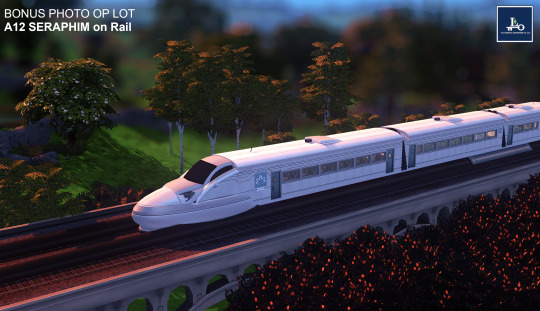

Techincal Informations
Packs Used


Download via SFS
Windslar M-Train Station : Download A12 Seraphim Photo op : Download
Sul Sul!,
Lesmana Enterprise Co., Ltd.
#simblr#lesmana-enterprise-ltd#sims 4#sims 4 screenshots#sims 4 aesthetic#ts4 simblr#sims 4 build#download#sims 4 no cc#showusyourbuilds#sims 4 tray#travel#station#high speed rail#get together#windenburg#64x64#no cc#maxis match#sims 4 cafe#cafe#train#transportation#airport#sims 4 airport
2K notes
·
View notes
Text

he's a vicpim 😔
yapping/og image below the cut
found this will graham version and got inspired


went looking for the text because i figured it'd be easier to composite with a png than anything else but—i found just the whole original image instead i guess—used the nasty nasty automated machine process (some ai wand tool) to edit out the weird distorted skinwalker lady and went from there -- enjoy (p)image lol


#meme#shitpost#levi's edits#despite my swag and chill vibes i actually have the nervous system of a small prey animal#i am a victim of my angelic nature#vicpim#lol#pim pimling#smiling friends pim#pim#pim smiling friends#sf pim#traumatized pim#smiling friends#will graham#og meme: GRLCULTURE
762 notes
·
View notes
Text
Brian Barrett at Wired (02.27.2025):
If you’ve felt overwhelmed by all the DOGE news, you’re not alone. You’d need too much cork board and yarn to keep track of which agencies it has occupied by now, much less what it’s doing there. Here’s a simple rubric, though, to help contextualize the DOGE updates you do have time and energy to process: It’s worse than you think. DOGE is hard to keep track of. This is by design; the only information about the group outside of its own mistake-ridden ledger of “savings” comes from media reports. So much for being “maximally transparent,” as Elon Musk has promised. The blurriness is also partly a function of the speed and breadth with which DOGE has operated. Keeping track of the destruction is like counting individual bricks scattered around a demolition site.
You may be aware, for instance, that a 19-year-old who goes by “Big Balls” online plays some role in all this. Seems bad. But you may have missed that Edward Coristine has since been installed at the nation’s top cybersecurity agency. And the State Department and the Small Business Administration. And he has a Department of Homeland Security email address and, by the way, also had a recent side gig selling AI Discord bots to Russians. See? Worse than you think. [...] Similarly, you’ve likely heard that the United States Agency for International Development has been gutted and the Consumer Financial Protection Bureau has been put on ice. All true, all bad. But here’s what that means in practice: Fewer people globally have access to vaccines than they did a month ago. More babies are being born with HIV/AIDS. From here on out, anyone who gets ripped off by payday loan companies—or, say, social media platforms moonlighting as payments services—has lost their most capable defender. Keep going. The thousands of so-called probationary employees DOGE has fired included a significant number of experienced workers who had just been promoted or transferred. National Science Foundation staffing cuts and proposed National Institutes of Health grant limits will combine to kneecap scientific research in the United States for a generation. Terminations at the US Department of Agriculture have sent programs designed to help farmers into disarray. On Wednesday, the Food and Drug Administration canceled a meeting that would have given guidance on this year’s flu vaccine composition. It hasn’t been rescheduled.
Don’t care about science or vaccines? The Social Security Administration is reportedly going to cut its staff in half. The Department of Housing and Urban Development is going to be cut by as much as 84 percent. Hundreds of workers who keep the power grid humming in the Pacific Northwest were fired before a scramble to rehire a few of them. The National Parks Service, the Internal Revenue Service, all hit hard. So don’t make any long-term bets on getting your checks on time, keeping your lights on, buying a home for the first time, or enjoying Yosemite. Don’t assume all the things that work now will still work tomorrow.
Speaking of which, let’s not forget that DOGE has fired people working to prevent bird flu and to safeguard the US nuclear arsenal. (The problem with throwing a chainsaw around is that you don’t make clean cuts.) The agencies in question have reportedly tried to hire those workers back. Fine. But even if they’re able to, the long-term question that hasn’t been answered yet is, Who would stay? Who would work under a regime so cocksure and incompetent that it would mistakenly fire the only handful of people who actually know how to take care of the nukes? According to a recent report from The Bulwark, that brain drain is already underway. And this is all before the real reductions in force begin, mass purges of civil servants that will soon be conducted, it seems, with an assist from DOGE-modified, automated software. The US government is about to lose decades of institutional knowledge across who knows how many agencies, including specialists that aren’t readily replaced by loyalists.
Wired has a solid article on how bad the DOGE-ificiation of government has gotten.
#DOGE#Elon Musk#Edward Coristine#Musk Coup#Trump Administration II#Department of Government Efficency
108 notes
·
View notes
Text
"Why are artists so butthurt about AI art? Horse carriage drivers didn't complain when they invented the car, they were just grateful that the technology evolved and made it easier to get around."
Art is not a carriage, it's not a vehicle. Its purpose is not to be efficient, to do a practical job with as little effort as possible. Art is not something that can be automated, because its artistry lies in the humanity of its creator. Art is wonderful, from a baby's first drawing, inexperienced and unskilled, to the paintings adorning the ceiling of the Sistine Chapel.
If you consider yourself an AI artist, I ask you: are you proud of yourself when the computer has completed another image that you will claim as yours? Do you look at it and feel the joy of having created something?
Does the generative process teach you how to see the world better? With every image created, do you evolve? Do you understand the planes of the face better now than 1000 images ago? Do you know what rim light is, and where to put it? Do you understand light sources? Tones? Could you take a piece of paper and shade a portrait by yourself?
"AI software is just like Photoshop or Blender, the next step in artistic technology".
It's not though, is it? A digital artist uses a pen to put colors on screen, chooses where to put each brush stroke, when to smudge or use the liquify tool. A 3D sculptor manipulates basic shapes into characters just like a traditional artist molds clay. An AI "artist" doesn't make any of the thousands of choices that lead to the creation of a real piece of art.
"But art is hard, and I'm not good enough."
Neither am I! Man, I'm not the worst artist in the world, but I'm not great, still not at the level I would like to be. Sometimes I draw something and I look at it and realize that it sucks ass! Sometimes I post a drawing online and realize that I drew a character out of proportion, that the light source is not consistent, that I've shaded outside the lines! And you know what's great? That I get to have an understanding of what I did wrong! I get to evolve! I redraw something from 5 years ago and realize that my composition is much better, my shading more believable. And I know that in 5 more years, I might redraw it again and pride myself in how much I've evolved.
I've been drawing since I was a baby, and I still have a long way to go. And that is also fine, because art is a lifelong pursuit, growing, changing, just as I am.
It's okay to not be good. Hell, it's okay if you don't even try to get better. By drawing, you WILL. It's inevitable that, by practicing, you'll learn.
You know what will not make you a better artist? Software that will generate your "art" for you. The result might look more complex than what your skill level allows you to create right now. But it doesn't look better. You could draw a crooked circle on xerox paper and it will look better than all the AI art in the world. Because you made it. Have some faith in yourself. Your vision has more artistic value than what that computer generated.
"If you're afraid that AI will steal your job, learn to draw better!"
I'm trying. Are you?
495 notes
·
View notes
Text
explaining f1: the cars
chassis
modern day f1 cars are constructed from composites of carbon fibre and other ultra-lightweight materials. the minimum weight currently permissible is 740kg including the driver but not the fuel.
engines
as of the 2014 season, all f1 cars have been equipped with turbocharged 1.6 l v6 engines, which were previously banned in 1989. this change gave up to a 29% increase in fuel efficiency.
transmission
f1 cars use highly automated semi-automatic sequential gearboxes, with regulations stating that 8 forward gears and 1 reverse gear must be used, with rear-wheel drive. fully automatic gearboxes are illegal to keep driver skill. the last f1 car fitted with a conventional manual gearbox was the forti fg01 which raced in 1995.
as of 2009, all teams use seamless-shift transmissions, which allow a near instantaneous changing of gears for minimal time loss. shift times for modern f1 cars are in the range of 2-3ms.
steering wheel
the wheel can be used to change gears, adjust the fuel/air mix, change the break balance and call the radio among other things, allowing the driver a huge amount of control. data such as engine rpm, lap times and tyre temperature etc. are displayed.
fuel
the fuel in f1 cars is fairly similar to ordinary petrol.
to make sure teams and fuel suppliers are within regulation, the fia requires fuel teams like shell, petronas etc. to submit samples of the fuels they are providing for races. at any time, fia inspectors can request a sample from the fuelling rig to compare. the teams usually abide by rules but in 1997 mika hakkinen was stripped of his third place finish in spa due to his fuel being the incorrect formula.
tyres
you can read all about tyres in f1 here!
breaks
the brakes used in f1 cars are designed to work in up to 1,000 degrees celsius.
drivers can control brake force to compensate for changes in track condition or fuel load.
notable cars
the victorious red bull racing rb18 from the 2022 season, driven by max verstappen.
the dominant mclaren mp4/4 driven by ayrton senna in 1988.
the highly successful ferrari f2004 driven by micheal schumacher at the 2004 united states grand prix.
the 1994 williams fw15c, widely considered to be one of the most technologically advanced f1 car of all time
the first f1 car to be powered by a turbocharged engine; the 1997 renault rs01.
the lotus 78, which exploited the aerodynamic effects of downforce, or ground effect, which was banned by the fia in 1983 (though it was later brought back for the 2022 season onwards).
the 2009 brawn bgp001, using a 'double diffuser' (to harness downforce) which was banned by the fia in 2011.
#f1#alex albon#carlos sainz#charles leclerc#fernando alonso#formula one#george russell#lance stroll#lando norris#lewis hamilton#formula 1#f1 2024#imola 2024#imolagp#italy 2024#logan sargeant#oscar piastri#sebastian vettel#jenson button#kimi raikkonen#kimi räikkönen#mercedes f1#ferrari#mclaren#aston martin#mark webber
133 notes
·
View notes
Text
Beats, Bytes & The Future Sound: AI Meets Electronic Music
Electronic music has always been about pushing boundaries, breaking rules, and bending sound into new dimensions. Now, artificial intelligence is stepping into the booth, reshaping how beats are built, melodies emerge, and tracks come to life. This isn’t about robots replacing producers—it’s about a new creative partnership, where human intuition meets machine-driven possibilities.The Evolution…
#AI and sound design#AI beat generation#AI for producers#AI in electronic music#AI in music production#AI mixing and mastering#AI music algorithms#AI music collaboration#AI music creation#AI music technology#AI music trends.#AI rhythm generation#AI-driven sound synthesis#AI-generated beats#AI-powered music software#artificial intelligence in techno#artificial intelligence music production#automated music production#creative AI music#digital music production#electronic music and AI#electronic music tools#future of music production#machine learning music#music composition AI#music innovation AI#music production AI tools#music production tools#neural networks in music#sound design AI
0 notes
Text
Chapter 2: Hunger
“Half a dog.”
“I told you not to tell me.”
“Can it, you muppets.”
Kyle let out a chuckle, listening to the tiredness in Price’s voice. The banter between Ghost and Soap was actively giving his poor captain a migraine.
He could definitely understand why. They had been on this helicopter ride since dusk and they had still a bit to go before they arrived. Which meant that Ghost and Soap had a million more jokes to tell each other.
Kyle flipped through the mission file on his lap, re-reading what they were heading into.
Mission Brief: Operation Silent Dawn
Objective:
Rescue a young girl, held captivity in a clandestine experimental facility. She has been subjected to inhumane testing, resulting in unknown abilities. Mission is to extract her safely and secure evidence of the facility’s illegal activities.
Mission Overview:
•Target: [REDACTED] (Subject 42)
•Location: High-security experimental facility, coordinates encrypted.
•Intel: The facility is run by an untraceable private organization conducting human experimentation. Security is heavily armed, and surveillance is omnipresent. [REDACTED] has shown signs of destabilizing powers—potential allies, or dangers, during the extraction.
Mission Priorities:
1.Secure [REDACTED]:
•Locate [REDACTED] cell and ensure her safety.
•Assess her mental and physical state upon retrieval.
•Be prepared for potential resistance, as she may not trust rescuers initially.
2.Neutralize Threats:
•Disable the facility’s security systems, including cameras, automated turrets, and containment measures.
•Avoid unnecessary casualties, but neutralize hostile personnel as needed.
3.Collect Evidence:
•Retrieve documentation, digital files, and physical proof of the organization’s illegal experiments.
•Ensure no incriminating data is left behind.
4.Exfiltrate:
•Extract [REDACTED] and the team via the designated evacuation route.
•Deploy countermeasures to prevent pursuit.
Team Composition:
Leader: Captain John Price, L.T Simon “Ghost” Riley
Long range specialist: L.T Simon “Ghost” Riley, Johnny “Soap” MacTavish
Recon Specialist: Kyle “Gaz” Garrick
Exfil: SGT. Nikolai Belinski
Potential Challenges:
•Enhanced Security: Recent intel suggests additional reinforcements have been deployed following a containment breach.
•Unpredictable Powers: [REDACTED] abilities are unknown, unstable, and may pose a threat to both her and the team.
•Limited Intel: The facility’s layout is only partially mapped, requiring on-the-ground adaptation.
Rules of Engagement:
•Maintain stealth for as long as possible to avoid full-scale alerts.
•Use non-lethal methods when feasible, but prioritize team safety.
•Do not engage [REDACTED] directly if she becomes volatile; attempt to de-escalate.
Timeline:
•Phase 1: Initial reconnaissance and infiltration.
•Phase 2: Disable facility security and locate [REDACTED].
•Phase 3: Secure [REDACTED], gather evidence, and initiate extraction.
•Phase 4: Evacuate to safehouse and debrief.
Success Criteria:
•[REDACTED] is safely extracted and stabilized.
•All team members are accounted for with no/minimal casualties.
•Evidence is retrieved to expose the facility’s operations.
Mission Codename: Silent Dawn
Prepare for deployment. The girl’s life—and the truth—depend on us.
“Captain, We are about the land.”
Kyle’s head snapped up at Nik’s words as his captain and team members all made eye contact with each other. Price nodded, a silent acknowledgment of the growing tension of the situation.
“Okay lads. Let’s go get us a win, yeah?”
————————————————————
The cell was silent, save for the steady hum of fluorescent lights overhead. You sat on the cot, knees drawn to your chest, staring at the walls. Your breathing was shallow, trembling—an attempt to suppress the cold that radiated from your core. The aftereffects of the experiment still clung to you like a second skin: the weight of the chemicals they had pumped into your veins, the electric prongs they’d pressed to your temples, and the dissonant voices that now whispered incessantly in your mind.
You didn’t know how long you had been back in your cell. Time was again, a haze in this place, measured only by the shifts in your tormentors’ schedules and the monotony of three disgusting pig blood bags slipped under the door each day.
Your name was stripped from you, though you tried your hardest to keep it in your head. You clung to that shred of identity like a lifeline, but even now it was slipping. During the experiment, the scientists kept calling you “Subject 42.” It sounded clinical, inhuman. Like you were. A monster.
You heard the door open as you were quickly grabbed and sedated, your limbs going weak as they strapped you to a gurney, the smell of alcohol and garlic burning your nose and throat like never before. You felt the feeling of needles pricking your skin, electrodes pressing to your scalp. “Hold still,” they had said, as if you had a choice. When the machines roared to life, your body convulsed involuntarily, your mind fracturing into a kaleidoscope of pain and colors you couldn’t name. Then there were the voices—soft at first, then loud, screaming, chanting incomprehensible words.
Now, in the quiet of your cell, they were still with you.
One whispered your name, almost tenderly. You whipped your head toward the sound, but there was nothing there. There never was.
Your hands clenched into fists. The new experiments were doing something to you—changing you. You weren’t sure how much longer you could fight. Last week, when you had screamed during one of their “tests,” the glass monitor in the observation room had shattered. You hadn’t even realized what you had done until you saw the evilness in the scientists’ eyes.
They’d called you ready, but dangerous.
The locks on your cell door were reinforced now, the walls lined with something you didn’t recognize but could feel—an oppressive hum that dulled your senses and dampened your abilities. You hadn’t even tried to fight it
A meal tray slid under the door, and you startled. You hadn’t heard the footsteps this time. You crawled toward it, the concrete floor cold against your bare skin. The blood was the same as always: disgustingly red and cold.
You picked at the bag, your appetite nonexistent.
But you were so hungry. Hungry for human blood.
“You can’t stay here forever,” a voice whispered again, louder this time.
You froze. “Shut up,” you hissed under your breath.
But the voice didn’t stop.
“They’ll come for you again, you know. They’re not done. They’ll never be done. You’ll die at this rate.”
You slammed your fist against the floor, your vision blurring with sudden tears. “Stop it!”
The lights flickered, and for a moment, the hum in the walls seemed to falter. Your breath hitched. The voice in your head subsided. You had thought it was your imagination until a loud boom shot through your ears, making you cover your ears in pain.
You didn’t know what had caused the sound and apparently nor did your kidnappers. You listened to the alarm that began to blare and the sounds of soldiers rushing down the hall.
Seconds were feeling like minutes, hours. You shifted into the corner, covering your ears as the gunshots rang out. Your breath was stuttering in your chest, the warm tears falling down your face. If whomever didn’t kill you, your fear definitely would. You heard someone yell, multiple feet rushing down to the hall and directly in front of your cell.
You heard the locks on your cell door disengage. The metallic clinks sent shivers down your spine. You quickly rose from the cot, your body tense, muscles coiled.
The door opened, and two guards began to rush inside, their faces hidden behind black helmets. A third figure followed—a scientist in a pristine white coat.
“Grab her now!,” the scientist yelled. “There’s no time!.”
Your jaw tightened. The fire within you flared, and for the first time, you didn’t try to suppress it. The guards moved toward you, but the air in the room shifted. A low rumble echoed through the cell, and the fluorescent lights flickered again.
The whispers in your mind grew louder, coalescing into a single, commanding voice: “Fight.”
You didn’t hesitate.
The guards lunged, but you grabbed them both by the necks. The air seemed to ripple as you threw them backward, slamming them into the walls, the sickening cracks of their skulls vibrating through your ears. The scientist screamed, scrambling for the door and slamming down a button.
The oppressive hum in the walls grew deafening, but you pushed against it with everything you had. The fire inside you roared to life, consuming your fear, your pain, your doubt.
The walls cracked, and the reinforced locks shattered.
You stepped out of the cell, your heart pounding. The scientist fell back, fear numbing his body as he began to quietly plead.
“Feed. Drink every drop.” The voice in your head commanded.
You pounced on him, his scream cut silent as you began to drink, the taste making your body shiver with ecstasy. You couldn’t stop, drinking well past the last time. The voices in your mind were now silent. You pulled your teeth out of his neck, just as you heard people round the corner.
2 men. In gear you had never seen before. You felt the fire in you diminishing as fear crawled back up your spine. You stood, your feet readying under you.
They wouldn’t trap you again. You’d be damned.
“Hey now…We aren’t—“
His sentence was cut short as you bolted down the hall, feet burning in pain as they slammed onto the broken glass around you. You could hear them chasing you, and it only made you move faster.
Almost. Almost there.
“Woah there! We cannae have you running away, now can we?”
You felt him scoop you up and toss you over his shoulder, making you thrash around like a cat in water. You watched as the rest began to get closer and for the first time in a while, you let yourself bawl.
“Soap, what did you do?!”
“Nothin! The lass just started to cry!”
“She’s traumatized you idiot!”
You were taken into a warm embrace, your face pressed against someone’s chest as they held you there like a small baby. He looked at you and softly smiled.
“Hey there. I’m Gaz.”
His hazelnut brown eyes were boring into your now puffy and red rimmed ones, making your heart start to calm down. You didn’t trust them, not for one bit. But it was nice to see someone smiling at you without malice for the first time in god knows how long. You said nothing in response, just softly nodded to show you understood.
“Gaz. Her feet.”
You looked at the blood that had dripped into a pool under you and you immediately grimaced at the sight. Your head immediately turned as you heard movement. You gasped softly as a behemoth of a man and a burly man with a bucket hat stepped out of the facility's office and began to approach you.
You felt your breathing speed up, fear paralyzing you still as he got closer. He stopped, a comfortable amount of space between you two. He looked at your feet and sighed.
“Doesn’t look like there’s any glass stuck inside. Let’s wrap it and get the medic to check on it when we get back.”
The two guys, Soap and Gaz, nodded in conformation. Soap pulled out some gauze and antiseptic, opening the packages.
“This will hurt lass, sorry in advance.”
Gaz held you carefully as Soap cleaned your feet, making you yelp in pain, grease warm tears feeling your eyes at the sting. You listened to Gaz’s soft words as he tried to calm you down, just as Soap wrapped your feet.
“Exfil is here. Everyone ready?”
“Always captain.”
You gripped Gaz as he carried you out of the facility, looking up only when he softly set you down in a helicopter chair.
You were finally free.
#ao3 writer#female writers#new writer boost#new writers on tumblr#task force 141#task force x reader#call of duty#simon ghost riley#john price#johnny soap mactavish#kyle gaz garrick
51 notes
·
View notes
Text

Io Full Face - October 29th, 1996.
"Io is a colourful place. The closest large moon of Jupiter, Io is the most volcanic moon in the Solar System with its surface being completely buried in volcanic lava every few thousand years. The black and red material corresponds to the most recent volcanic eruptions and is probably no more than a few years old. This image by the automated spacecraft Galileo highlights the side of Io that always faces away from Jupiter. In this image, picture colours have been adjusted to enhance contrast, but are based on real composite infrared, green and violet-light images."
48 notes
·
View notes